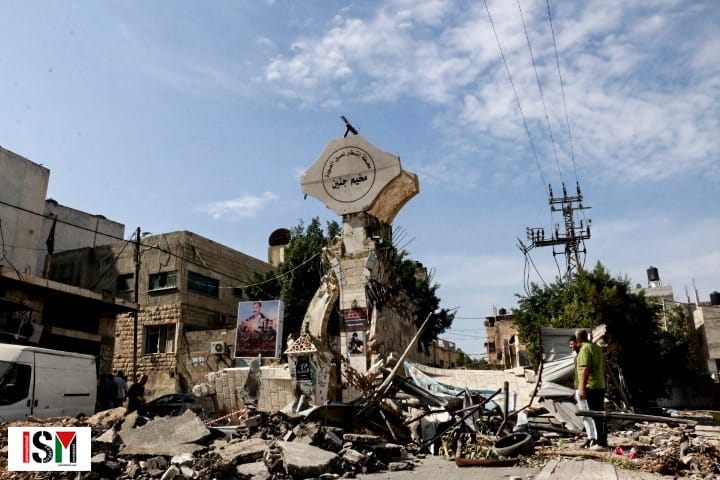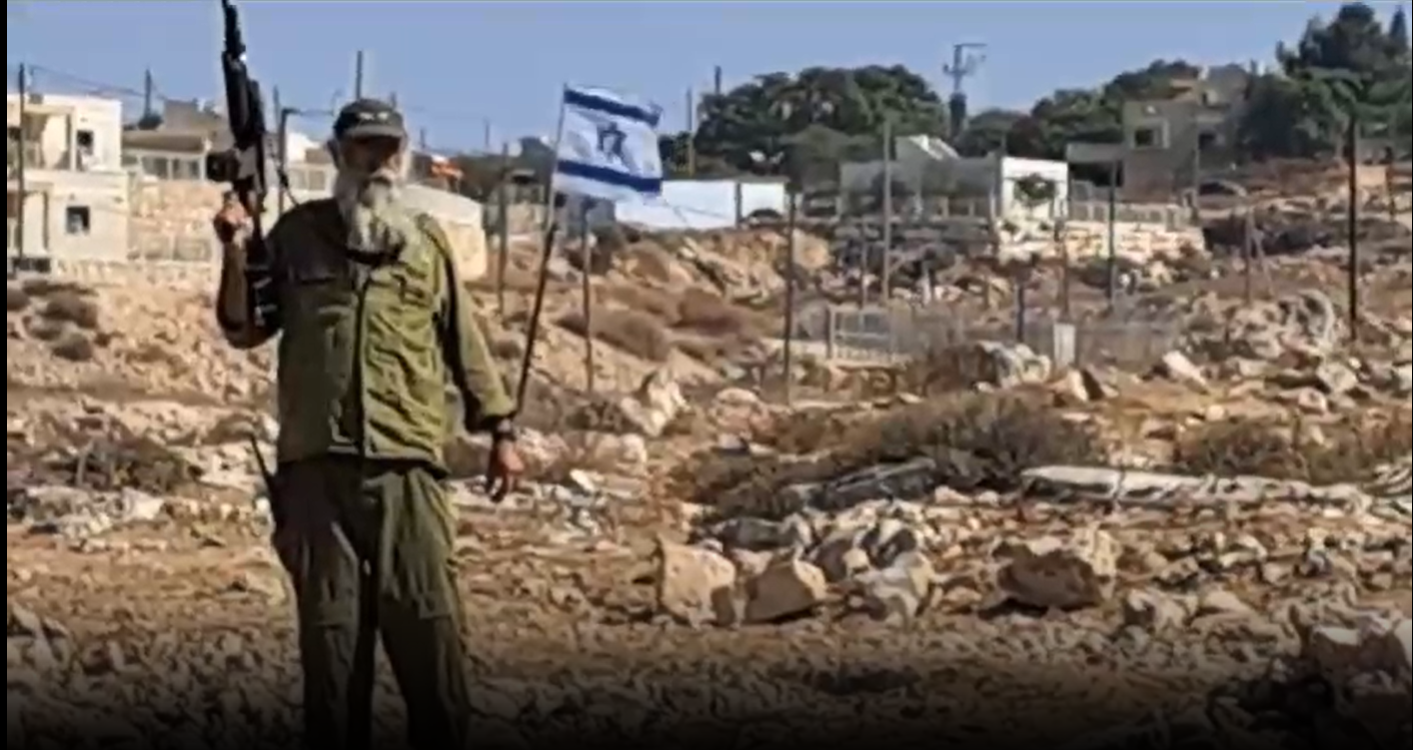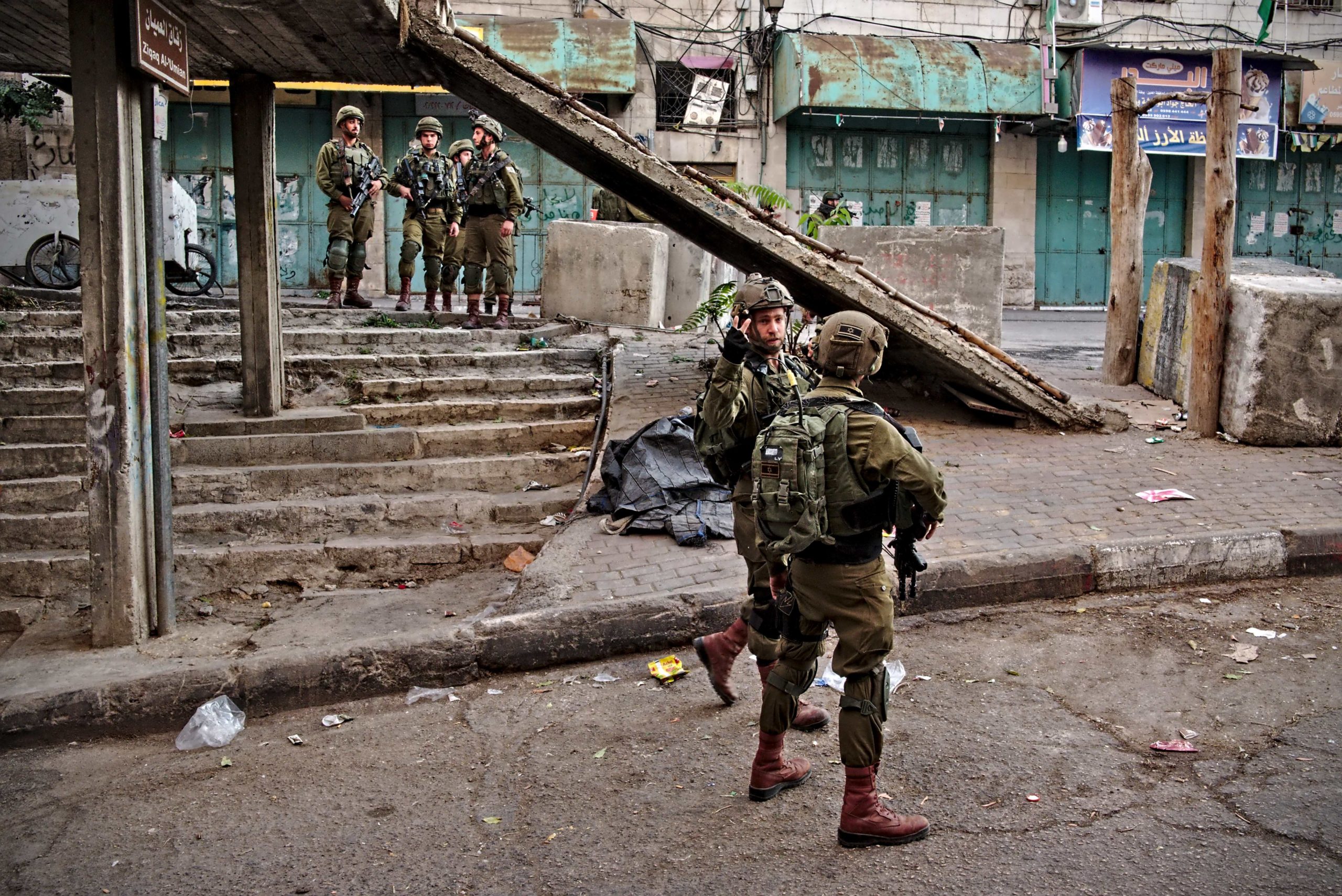Tag: Israeli violence
-
Israeli forces bulldoze Jenin monument in deadly night raid
1 November 2023 | Jenin | International Solidarity Movement By Diana Khwaelid On Sunday, October 29, a huge column of military vehicles stormed the city of Jenin in an overnight raid, killing four Palestinians, and destroying a monument for Jenin’s martyrs. Israeli soldiers invaded the city’s Jenin camp at 12.30am, accompanied by an armed…
-
Watch: Israeli settlers and soldiers destroy Palestinian property, shoot live ammunition in Masafer Yatta
Masafer Yatta | International Solidarity Movement On October 25th, 2023, Israeli settlers and soldiers invaded the land belonging to a Palestinian family in Masafer Yatta, south of Hebron, and used a bulldozer to uproot trees and destroy the family’s garden. The colonial attack occured in the Palestinian village of Tuwani and targeted the…
-
About the legitimisation of the Palestinian oppression in Al Khalil (Hebron)
Personal reflections of a ISM activist about the settlers’ violence and its related impunity in Al Khalil, West Bank. To which extent these people are allowed by the Israeli soldiers to transform a Palestinian city into their own amusement-park?



